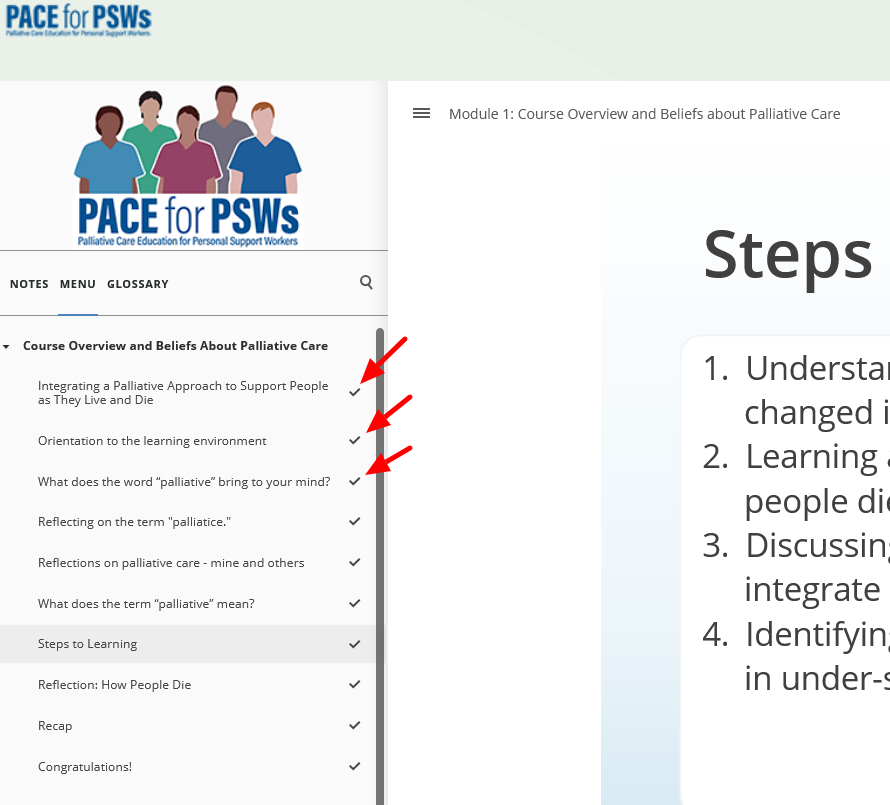Module 1: Learning Outcomes and Reflective Activity
Understand the learning outcomes for this course and begin learning in a reflective activity on boundaries.
This module provides learning outcomes regarding therapeutic boundaries and begins with a reflective activity.
Included in this module is a review of the course tools and downloadable version of the learning outcomes.
Module 2 The Family Dance
The metaphor of "the family dance" is explained as a way to understand how family member interact. Understanding the role of the family dance can help caregivers to maintain their boundaries.

We're excited to introduce this course, that begins with "the family dance" as a way to understand how family member interact. Understanding the role of the family dance can help caregivers to maintain their boundaries. The family dance is a concept developed by Elizabeth Causton, a social worker and palliative care response team counsellor with Victoria Hospice. She lends her expertise and experience to this course to help students understand and develop therapeutic boundaries that will benefit themselves and the people they are providing care for.
Module 3 The Essential Role of Therapeutic Boundaries
Learn why therapeutic boundaries are essential for care providers and how they benefit the person and family you are providing care for, as well as yourself.
In Module 3, you'll learn why therapeutic boundaries are essential and why they are beneficial for care providers, and the people they provide care for. Maintaining boundaries helps you to be resilient to the stress of caring for people, saying hello and then saying goodbye time and time again.
Learn about boundaries and why they are good for everyone!
Module 4 Strategies for Maintaining Therapeutic Boundaries
Develop strategies for maintaining your boundaries and ways to know when your boundaries are clear, and not clear.
This module identifies ways to know if your boundaries are clear, and when they are not clear. Learn ways to maintain boundaries and to avoid 'hooks' which can make boundaries vanish!
The podcast, Signs You May Be On Someone Else's Family Dance Floor has moved. Please click here to access it.
Module 5 Strategies for Providing Care in Small Communities and for Collaborating with Team
Learn practical ways to address the specific challenges of providing palliative care in small communities, and strategies for collaborating with team.
Maintaining boundaries when working in small communities and when collaborating with team can be challenging. Learn ways to navigate the dual caregiver role, and how best to collaborate with team when providing palliative care.
Module 6 Course Quiz
Welcome to the final module for this course.
Requirements: 70% or greater to pass the course.
3 opportunities to pass the quiz.
The answer key is shown only after you have passed the quiz.
Check here before starting the quiz
Have you viewed, or clicked on all slides of all modules?
If you have missed any slides, the quiz will NOT be graded.
You will know you have missed slides if you submit the quiz for grading, and you do not get a grade for it within minutes.
How to fix this
- Go back into the modules, select "Menu" in the top left (red circle in image below). This view displays all the slides in the module.
- A viewed slide will have a check mark beside it (Red arrows are pointing at the check marks).
- If a slide does not have a check mark beside it, click the title to set it as viewed. A check mark will appear.
- Repeat this process for all modules of the course.
- When finished, open the quiz module. You will now be able to submit the quiz for grading.

Good luck!